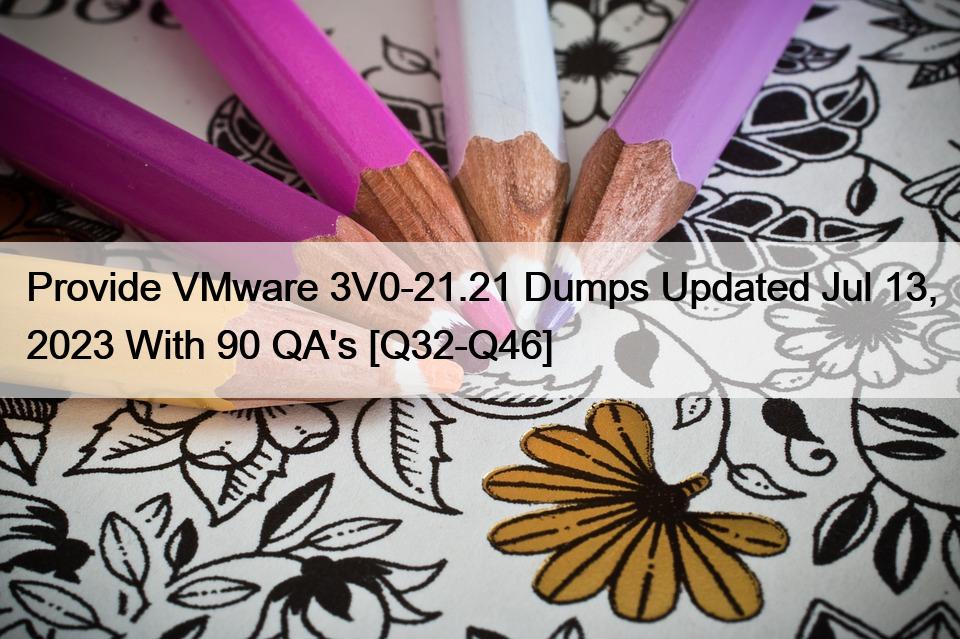Provide VMware 3V0-21.21 Dumps Updated Jul 13, 2023 With 90 QA’s [Q32-Q46]

Provide VMware 3V0-21.21 Dumps Updated Jul 13, 2023 With 90 QA’s
Latest 3V0-21.21 Dumps for Success in Actual VMware Certified
The 3V0-21.21 exam covers a range of topics related to the design and implementation of virtualization solutions using VMware vSphere 7.x. These topics include virtual machine design, storage design, network design, security design, and automation and orchestration. Additionally, you’ll be tested on your ability to integrate VMware solutions with other technologies, such as cloud computing and software-defined networking.
Changing the Concept of 3V0-21.21 Exam Preparation 2023: https://www.topexamcollection.com/3V0-21.21-vce-collection.html





